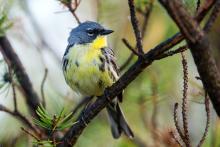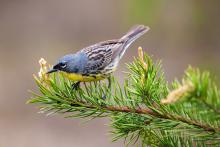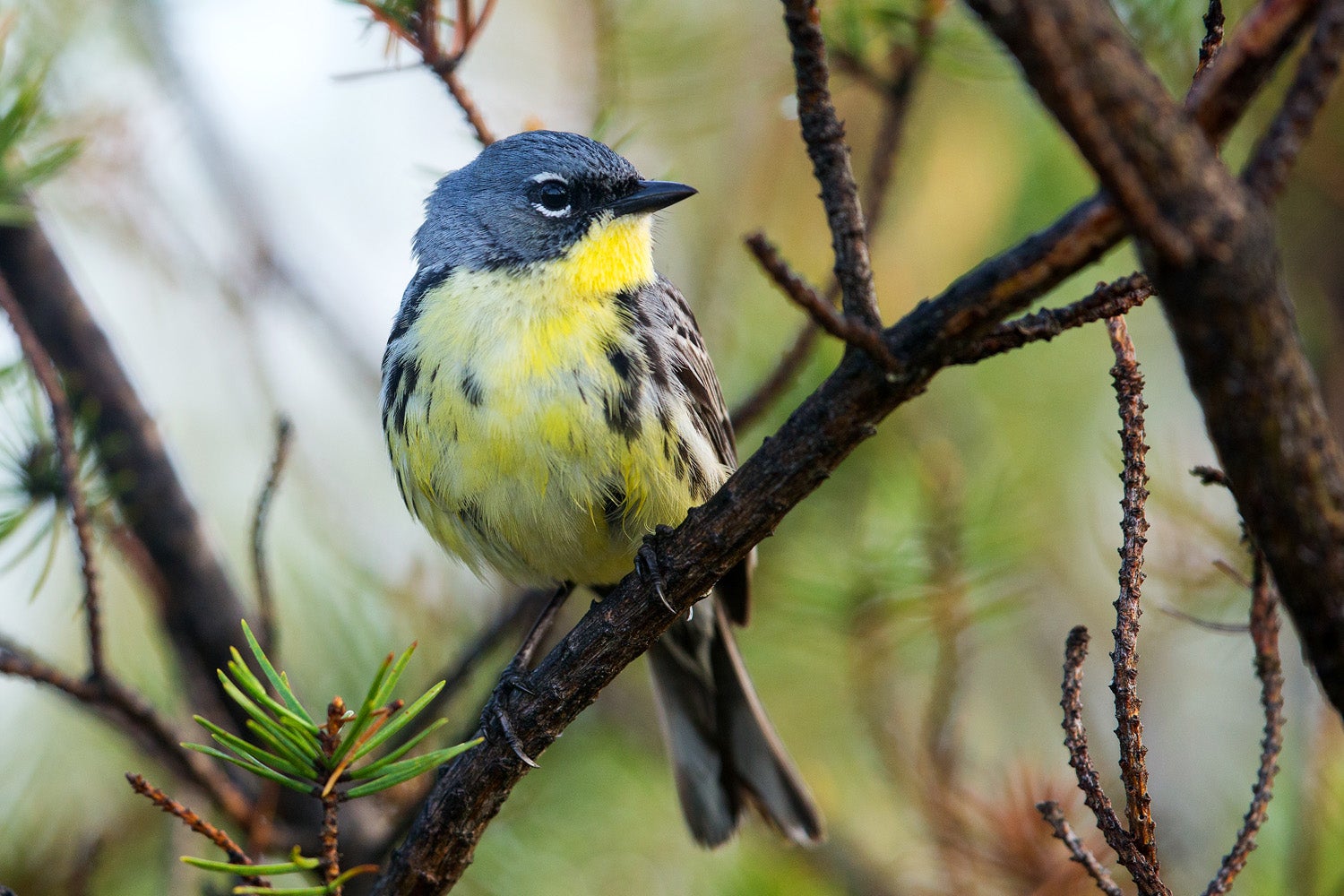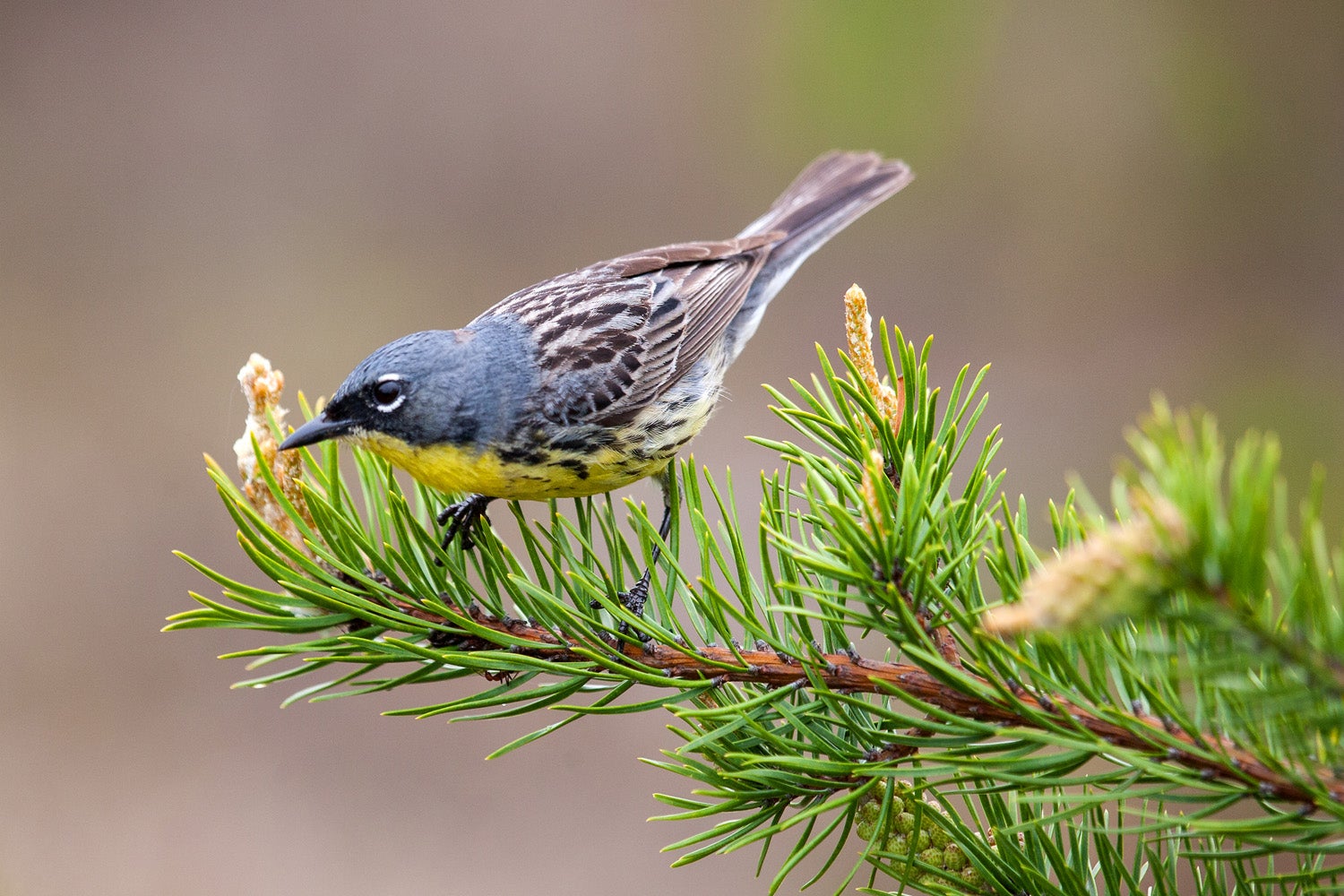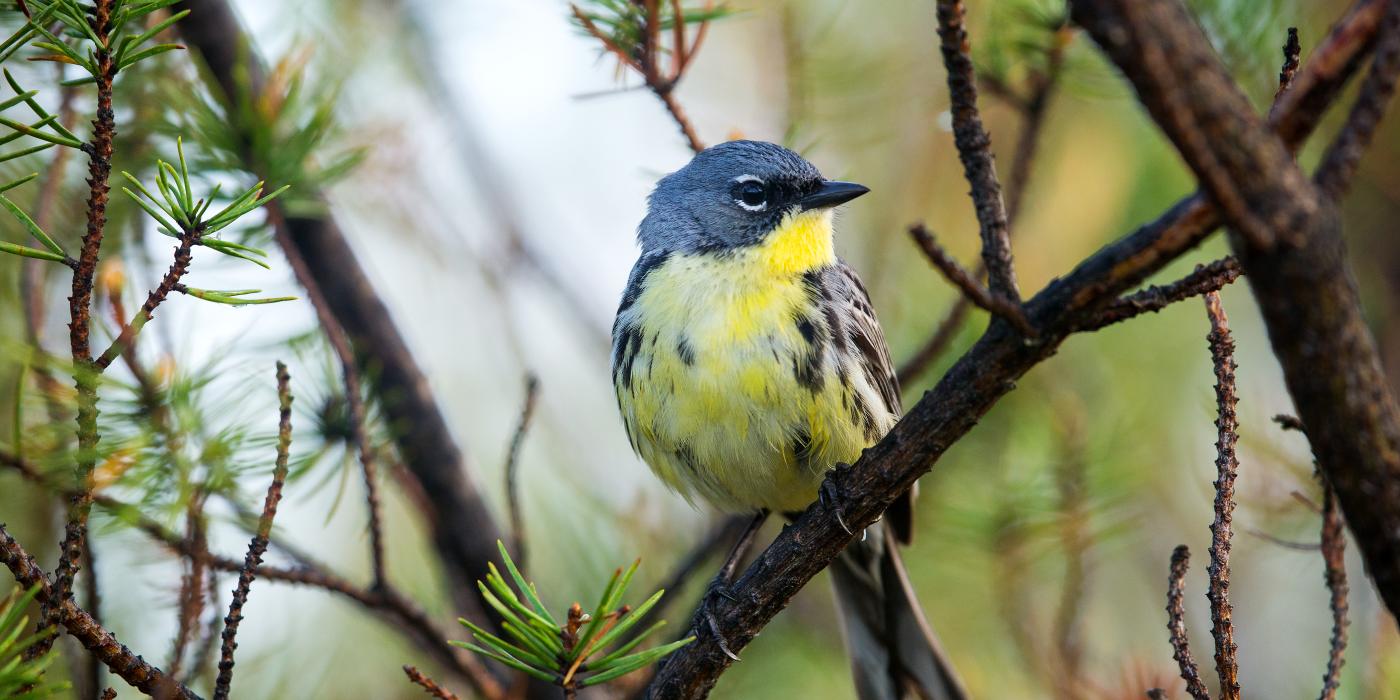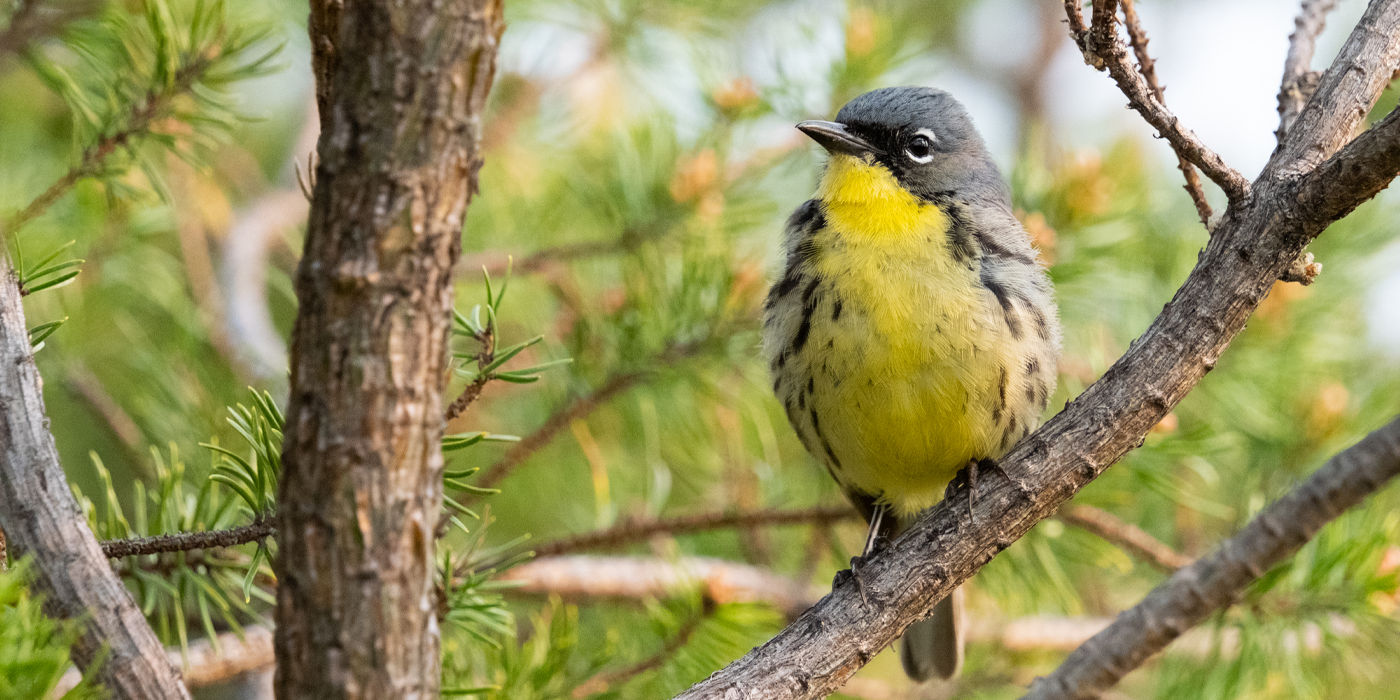Kirtland’s Warbler No Longer Needs Protection from Brown-Headed Cowbird in Michigan
For the past 40 years, brown-headed cowbirds have been trapped and killed in Michigan to prevent them from laying eggs in endangered Kirtland’s warbler nests—causing warbler parents to care for cowbird chicks instead of their own chicks. A study published today in the Journal of Wildlife Management by scientists from the Smithsonian Migratory Bird Center and Utah State University found that Kirtland’s warblers may no longer need the extra protection against parasitic brown-headed cowbirds. In 2018, cowbirds parasitized less than 1% of Kirtland’s warbler nests in Michigan after scientists gradually removed cowbird traps during the previous three nesting seasons.
“We think this is a turning point for Kirtland’s warbler management,” said lead author and Smithsonian Migratory Bird Center postdoctoral fellow Nathan Cooper. “In 2015, the first year of the study, after we started removing cowbird traps, everybody was shocked when we only found two parasitized nests. By 2018, we thought that it might actually be possible to stop trapping cowbirds altogether, which would be exciting because it means that this species is less reliant on conservation than previously thought.”
From 2015 to 2018, researchers found only 20 cowbirds during surveys in the warblers’ core breeding range in Michigan. During those four nesting seasons, only four of 514 Kirtland’s warblers’ nests were parasitized by cowbirds. Initially in 2015 and 2016, scientists closed 12 cowbird traps at four study sites. Seven additional traps were closed in 2017. Finally, in 2018 researchers closed all of the traps across the entire core breeding range in Michigan.
Kirtland’s warblers became dependent on conservation efforts in Michigan, which is where their summer nesting grounds are, in 1972. Although cowbirds are a native species to North America, they had not lived in Michigan before the early 1900s. By 1971, only 200 male Kirtland’s warblers remained in the wild and about 70% of their nests were parasitized by cowbirds. There are now 2,300 breeding male Kirtland’s warblers and the number of cowbirds in Michigan is decreasing, not due to trapping, but more likely because of changes to the surrounding landscape. Northern Michigan is now much more forested than it was in 1972, due to reversion of lands from agriculture to forested habitats. Cowbirds do not like to live in forests and prefer open landscape, or landscapes that have been cleared for agriculture.
The evidence of the Kirtland’s warbler’s ability to thrive in their core breeding range without the intervention of cowbird control is especially timely because the species is being considered for removal from U.S. Endangered Species List during summer 2019. If the Kirtland’s warbler is delisted, it will still be monitored to avoid another population crash, but the birds will receive less funding to support conservation measures like cowbird control and habitat creation.
Despite its potential change in status, the Kirtland’s warbler will still receive help from management agencies. The Michigan Department of Natural Resources will assume control of managing the cowbird population after the Kirtland’s warbler is delisted. They will monitor the rate of parasitism of Kirtland’s warbler nests by brown-headed cowbirds and will resume trapping efforts if it becomes necessary again. During the next few years, authors of the study will develop a monitoring program that will cost substantially less than original trapping program.
Additional authors on the paper are Clark Rushing, Utah State University, Department of Wildland Resources, and Peter Marra, Smithsonian Conservation Biology Institute, Migratory Bird Center.
The Smithsonian Conservation Biology Institute plays a leading role in the Smithsonian’s global efforts to save wildlife species from extinction and train future generations of conservationists. SCBI spearheads research programs at its headquarters in Front Royal, Virginia, the Smithsonian’s National Zoo in Washington, D.C., and at field research stations and training sites worldwide. SCBI scientists tackle some of today’s most complex conservation challenges by applying and sharing what they learn about animal behavior and reproduction, ecology, genetics, migration and conservation sustainability.
Image Gallery
